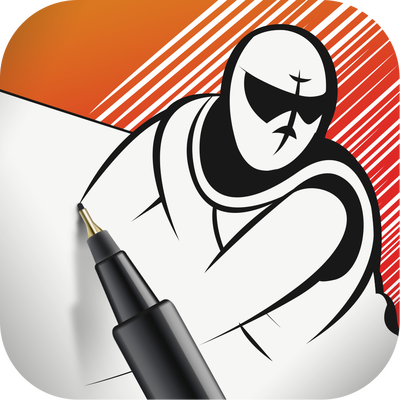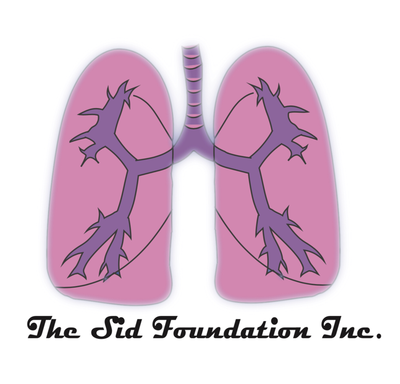
Shawn Martinbrough
“Stepping outside of one’s regular environment, interacting with new and different people and experiencing life to its fullest are the best fuel for creativity. " “Stealing or directly swiping someone else’s work is a No-No. It’s the ultimate corny move." @smartinbrough www.shawnmartinbrough.com Bio Shawn Martinbrough is the author of “How to Draw Noir Comics: The Art and Technique of Visual Storytelling.”, published by Random House and reprinted in several languages. He is a critically acclaimed creator/artist whose DC Comics, Marvel and Dark Horse Comics projects include “Batman: Detective Comics”, “Luke Cage Noir”, “Captain America”, “The Black Panther” and “Hellboy”. He is the artist of “Thief of Thieves”, published by Skybound/Image Comics. Shawn has co-created characters featured in the film, “Deadpool”, the animated “Batman: Gotham Knights”, the FOX television series “GOTHAM”, “The GIFTED” and the “JUSTICE LEAGUE” feature film. Shawn’s work has been covered by Vanity Fair, USA Today, BBC World America, The New York Times, ABC News, NBC News, The Washington Post, NPR, The Hollywood Reporter, Entertainment Weekly, BET, Essence, Ebony, The New York Daily News, AOL, Publisher’s Weekly, SiriusXM and others. Shawn has been a featured guest and panelist at comic conventions in San Diego, New York, Washington, D.C., the UK, Paris, São Paulo and Rome. As an artist, Shawn has given lectures on his career at Walt Disney Animation, Lockheed Martin, The Pentagon, TEDx Mid Atlantic, The Society of Illustrators, the School of Visual Arts, Fiorello H. LaGuardia High School of Music & Art and Performing Arts, The University of Michigan, The Savannah College of Art and Design, The 100 Black Men of America Conferences and the Book Expo of America. Inspired by Shawn’s TEDx Talk, which explored storytelling and themes of inclusion, The George Lucas Foundation consulted with Shawn to develop the Lucas Museum of Narrative Art Summer Studio. Co-hosted by the Boys and Girls Club in South Central Los Angeles, Shawn worked with a team of artists and educators to provide an intensive two week workshop culminating with each student creating their own mini comic book. Shawn is a Native New Yorker and an alum of both the Fiorello H. LaGuardia High School of Music & Art/Performing Arts and The School of Visual Arts. Being born and growing up in the Bronx. How did your experiences affect your art? During my junior high school years, I learned to paint while taking a class at my local community center in Co-op City. My teacher, Emilio, introduced me to acrylics and color theory. My formal art education began after I was accepted as an art major to the Fiorello H. LaGuardia High School of Music and Arts. In addition to being immersed in drawing and painting classes, I was interacting with a diverse school of kids from all walks of life across all the five boroughs of New York. The amount of creative and social stimuli I experienced during those years was incredible. In your How to book (How to Draw Noir Comics: The Art and Technique of Visual Storytelling) you share several exercises for artists to practice such as taking B & W pictures to develop composition skills, and drawing faces and objects with dramatic lighting. Are there any other best practices you wish to share that weren’t included in the book or that you developed after its publishing? Drawing from life is an exercise that I cannot stress enough. I regularly use photo reference for my work since I wasn’t blessed with a photographic memory to remember all of the unique details of a subject. I still use all of the techniques that I describe in my art instruction book, “How to Draw Noir Comics: The Art and Technique of Visual Storytelling”. I’m always looking to discover and be inspired by artists from across the spectrum so I love visiting museums, galleries, pop up exhibitions, street fairs, etc. Stepping outside of one’s regular environment, interacting with new and different people and experiencing life to its fullest are the best fuel for creativity. Any worst practices that artists should avoid at all costs? Copying other artists directly. We all have our favorite artists but when starting out, you have to realize that the artist whose style you admire, is usually influenced by an artist that they admire. So basically, you’re copying a copy of a copy. Stealing or directly swiping someone else’s work is a No-No. It’s the ultimate corny move. Who do you feel should/shouldn’t pursue a career in comics? If you don’t have the patience or dedication to build a career as an artist, this profession probably isn’t for you. Then again, you can apply this principle to any profession. I believe that being an artist is akin to being an athlete. You must practice every day to get better and at the same time, you must learn how to market yourself as a small business. That last part is something art schools don’t teach you. What do you recommend to aspiring artists that you wish you had known much earlier? What would you of told yourself 20 years ago? I would have told my younger self, “Make sure to create various employment options for yourself by diversifying the number of companies that you work with sooner in your career. Never get comfortable working for only one company unless, you’re the owner of that company.” What do you love best about making comics? I love the process and the art of telling stories. Solving the artistic challenge of visualizing what the writer has written on the page can be very satisfying, for the most part. Sometimes, as the artist, you never quite solve the problem to your satisfaction. You simply run out of time. Having worked with some of the best writers in the industry over the course of my career has inspired me to write my own stories. Actually, I’ve always written stories of my own. It’s been very advantageous to work alongside really talented writers and absorb some of their approaches to plotting and scripting. You had your start working with Milestone Comics. That was an incredible ensemble of artists & writers that produced remarkable content but struggled with sales and distribution plus the loss of Dwayne McDuffie. How was your experience working for Milestone? I fell into working for Milestone actually. I knew Michael Davis, one of the original founders. Years prior, Davis had introduced me and other students from his cartooning class at the Children's Art Carnival in Harlem to many professional artists working in the comic industry like Denys Cowan, Walt Simonson and Bill Sienkiewicz. Later, when Milestone was founded, I was already working as a freelance artist for Marvel. At that time, the Marvel offices were located on Park Avenue, a ten minute walk from Milestone. When I was done dropping off artwork at Marvel, I would swing by and hang out at the Milestone offices. One day, they asked if I would be interested in inking a new penciller named John Paul Leon on “Static”, one of their flagship titles. John’s art was amazing so I said sure. Over the next number of years, John and I worked together on various projects including, “Static” and “The Shadow Cabinet” for Milestone, “The Further Adventures of Cyclops and Phoenix” and “Logan” for Marvel and “The Challengers of the Unknown” for DC Comics. Working at Milestone was a really fun and empowering time in my career. A great and talented group of people. What do you wish was different about the comics industry? More diversity on the editorial side would be great. Editors are the gatekeepers for which projects get considered and which writers and artists get hired so it would be nice to have folks who are organically receptive to different voices and experiences than their own. It would be smart business as well. I also wish there would be stronger synergy between the publishers and the studios when it comes to promoting comic book sales. For example, it makes no sense that Black Panther movie made a billion dollars worldwide but the average Black Panther comic sells under 50k. This is a missed opportunity that applies to most comic book properties that are adapted to film and television. Which books do you recommend artists should have in their reference library? Favorite instructional material? This is a tough question because there are so many. “The Alex Toth: Genius Animated & Illustrated” collections are amazing. “DC: The New Frontier” by Darwyn Cooke, “Elektra: Assassin” by Frank Miller & Bill Sienkiewicz, The Fantastic Four” Omnibus by John Byrne, The “Nexus” collection by Mike Baron & Steve Rude… Top 5 favorite artists. There are too many artists that I admire and am inspired by so I can’t narrow them down to a top five. To name a few in comics, Alex Toth, Jack Kirby, David Mazzuchelli, John Byrne, George Perez, Walt Simonson, Frank Miller, Bill Sienkiewicz, Mike Mignola, Jose Luis Garcia Lopez, Tony Salmons, Steve Rude, Moebius, Jorge Zaffino, Eduardo Risso, Khary Randolph, Ron Wimberly… I could go on and on. Top 5 favorite comic characters. I haven’t had a favorite comic book character since high school. However, I find Doctor Strange, The Question, the cast of characters from “100 Bullets”, Iron Man, Doctor Doom, Galactus, Conrad Paulson and Celia (from “Thief of Thieves”) to be very compelling characters. Top 5 favorite comics and graphic novels. Again, I can’t narrow this list down to THE top five so I’ll mention some of my favorites that I feel don’t receive enough love,“Cosmic Odyssey” by Jim Starlin and Mike Mignola, “Nat Turner” by Kyle Baker, “Pride of Baghdad” by Brian K. Vaughan & Niko Henrichon, “Twilight” by Howard Chaykin & Jose Luis Garcia Lopez, “X-Men: God Loves, Man Kills” by Chris Claremont & Brent Eric Anderson. What type of work are you interested in doing in the future? More writing. Definitely some original creator owned projects that I will write and draw. I would love to return to directing. Years back, I took some time off from comics to write and direct a few short films that ended up running in several film festivals. Those were some of the most creatively fulfilling times in my life. Working with actors, scouting locations, etc. was such a creative rush. I also have interest from publishers and a few ideas for a follow up to “How to Draw Noir Comics”. I just need to nail them down. How can others find you or your work? www.shawnmartinbrough.com Instagram / Twitter : @smartinbrough Books by Shawn MartinbroughArt GalleryMedia featuring Shawn Martinbrough
0 Comments

Rolo Ledesma
“You got to handle every line and page likes it's your best." @rolo_world www.curvesandbullets.com Bio Creator of the comic book series Curves and Bullets. Will Eisner & Russ Manning Award nominee. Comic book & storyboard artist. Owner of Rolo Wear. Son of world class Dominican painter Clara Ledesma. Where are you from? Born and raised in New York City Where did you grow up? Manhattan and Queens, New York also some time in Montreal, Quebec. How did your experiences affect your art? In my early years living in Queens then in Manhattan the graffiti and Hip Hop music molded my vision then the combination of all forms of animation and comic books from American to European helped shaped my style, creativity and coloring also watching mom doing her paintings. Your mother is Clara Ledesma. A very accomplished and phenomenal artist from the Dominican Republic. How has she and her work influenced you as an artist? As far as mom's art, its her discipline to complete what she started and her work ethic. She never failed a deadline. It's why her name was never tarnished here (In the United States), in Dominican Republic or Canada, etc. Her strong vibrant coloring influenced me too. I love using it in my art.
Learn more about Clara Ledesma:
https://en.wikipedia.org/wiki/Clara_Ledesma What type of stories do you like to make comics about? I mostly do action-adventure comics and children's books. Children books are fun- I get to draw in a whole other style that is much gentler and soft but still brings aspects of the way I do my comics such as angles, expressions, etc. Whats your process? Elaborate on how you work through your projects. How do you break up your time for your projects at different stages? I mostly draw my projects at night after I'm done drawing storyboards at ad agencies during the day, the peace and stillness of the evening helps. I put on my headphones put on my music and away I go! Most people don’t have the determination to do something and stick to it from start to finish. If you actually sit down and write your story, if you draw it out in panels, you put yourself several steps ahead. Set goals for yourself. Give yourself a few weeks or a few months to go over an idea, to do sketches of it in your sketchbook, to talk to friends about it. Once those weeks or months are over, you’ve got to move on to the actual writing and drawing it doesn't matter how scared you are time put the first line on the paper. Worst practices. What to avoid? Biggest waste of time? Biggest Novice mistakes? Common mistakes seen at pro level from artists. I a lot of times procrastinate, its normal we can't just turn on the switch and draw, etc ...but at that moment you need start looking at things that inspire you art, comics, music, film..and you will see how the flow will come back. Sometimes it shows in the art if you are not feeling the characters or the storyline (it happens to everyone from pros to newcomers), its ok but you got to handle every line and page likes its your best work, step back for a few and go back to it if that feeling occurs. Thats how I do it if it happens to me . We all have different methods- feel whats comfortable to you. Who should/ shouldn’t pursue a career in comics? To pursue a career in comics is not easy that's the first thing. If you have determination, the heart and end goal also working lotsa hours and from day or evening late hours to create something everlasting then jump right in its a beautiful thing creating comics. If you can't stick to deadlines and go through changes in the process that happen such as the changing of layouts or characters, the costumes, panel works, and story, etc and can't take critiques then comic books might not be a field for you. To newcomers, if you have that spark to create and love for illustrating start with a plan look at your inspirations. We all have inspirations, see the process and study layouts in you favorites books and study their style too imitation is ok to a certain extent then you need to create your own style- it will come as time moves on. What do you recommend to aspiring artists that you wish you had known much earlier? What would you advise yourself 20 years ago? Something I wish I had learned earlier is anatomy, it's super important , thats a must no matter what style you draw in (comic or manga style). I tried out to Marvel many moons ago and the submissions editor at that time Mr. Lewendowski told me, “ Your talent is raw but your muscle structure needs help.” He recommended Gray's Anatomy, a great book to use and Will Eisner's Comics and Sequential Art book ..two amazing books that helped me so much. What do you love best about making comics? What I love about making comics is to create new worlds, seeing the images in your head then putting them on paper and seeing the pages come alive basically and having a team of like minded people that write and also color your stories is very key in that process. Well me being independent so many years I love being a creator-owned illustrator and self publishing comic book creator. I can always have freedom to do and create anything I desire. I was nominated a few years ago for the honorable Wil Eisner /Russ Manning newcomer in the comic book industry award, that alone in itself was amazing for me. It was doing my art with a small indie comic book publisher here in NYC ..working with Seen, the graffiti legend among others that helped shaped the book with Brian Ferrara writing and Phetus, another graff legend that made that book possible. Its funny how that book I drew it in the classic Looney Tunes / Ralph Bashki style was nominated compared to my other traditional comic style. What do you wish was different about the comics industry? Many of the big houses are amazing but you are some what limited once you are hired.
Which books do you recommend artists should have in their reference library?
Books I recommend. I always have em on my self ... Draw Out the Story: Ten Secrets to Creating Your Own Comics Freehand Figure Drawing for Illustrators: Mastering the Art of Drawing from Memory Comics and Sequential Art: Principles and Practices from the Legendary Cartoonist
Favorite artists.
My favorite artists are mostly the legends I grew up with, met and became friends with (Something I never even thought would happen) like Jim Steranko and Jose Luis Garcia Lopez. I wish I would of met John Buscema. I love and admire the works of Alex Ross, Brian Bolland and Nick Manabat. Top 5 favorite comic characters. Why? Judge Dredd, the gritty and amazing art and storylines. Batman The Dark Knight, what is else there to say ..lol 75 years strong. Spider Woman, the original version Marie Severin created, an amazing character. Cable, hard nosed mutant and awesome character with multi-levels. Deathblow by Jim Lee kinda obscure but i loved the storyline and art technique and Cybernary Nick Manabat's finest beautiful dark and gritty work and sadly his only work due to his passing Top 5 favorite comics and graphic novels? Judge Dredd meets Batman vol. 1 DC vs Marvel Crossovers graphic novel Tintin Objectif Lune Asterix Vs The Galles Milo Manara's Gullivera: Oversized Deluxe What type of work are you interested in doing? I'm pretty happy with what I'm doing now...storyboarding and comic books. How can others find your work? You can find me at: www.curvesandbullets.com www.instagram.com/rolo_world @rolo_world www.facebook.com/rololedesmanyc www.instagram.com/curvesandbullets @curvesandbullets
The Living Legends interview series highlights established and influential people in the comics industry.

Jiba Molei Anderson “Black is Beautiful” was more than a slogan growing up, it was and is a way of life. "Ultimately, I am in the practice of training warriors; young men and women who have a distinct point of view and the drive to accomplish their goals. Life is a competition and I am in the business of creating champions." www.griotenterprises.com Bio: Jiba Molei Anderson is the CEO of Griot Enterprises, a publishing company / visual communication studio and creator of its flagship property, The Horsemen. He is also the curator of 4 Pages 16 Bars: A Visual Mixtape, an anthology which focuses on independent works from creators of color and maintains The Afrosoul Chronicles, a blog about comics, pop culture, politics and race. Anderson has had numerous one-man and group shows, art directed and published over 12 books and has been invited to speak about his work and the representation of race and culture at various institutions including the School of the Art Institute of Chicago and the Ohio State University. The Horsemen: Divine Intervention and the anthology 4 Pages 16 Bars: A Visual Mixtape have been used as textbooks for classes at OSU. Anderson has been employed as a graphic designer, animator, art director and graphic novelist for entertainment and educational institutions such as Universal Music Group, the University of Illinois - Chicago, the Smithsonian National Museum of African Art and the Chicago Academy of Music including The Song of Lionogo: An Indian Ocean Mythological Remix for the Smithsonian National Museum of African Art (with Brightseed Collaborative). Currently, Mr. Anderson is employed as a Part – Time Lecturer at Chicago State University. Questions: Where are your from and where did you grow up? I was born and raised in Detroit, Michigan. My mother is from Liberia while my father is from the U.S. So, I am first-generation born in the States on my mother’s side… My birth was Pan-African in nature. How did your experiences affect your art? I grew up in an environment where it was the U.S. outside my window and Africa behind closed doors. I grew up with the traditions, the food, the politics, the music, the art, the strength and power of African culture, the endurance, tenacity, passion, creativity and drive of African American culture. “Black is Beautiful” was more than a slogan growing up, it was and is a way of life. I was extremely lucky to be born into a family of creative people on both sides. My father is an architect, my younger siblings are all professional creatives. Cousins, aunts and uncles are working creatives or artisans. Many of my family members are educators and some were political and historical figures including my mother’s father. On the flip side, the American side, my people are hard workers, hustlers and grinders who don’t let obstacles get in their way. They have the ability to make things happen through sheer determination and will. Because of this, I feel that I have a legacy to uphold while contributing to that legacy. I can never half-step when I create. My family are some of the coldest artists of all time, and I’m not saying that because we are blood-related. I learn from them, they learn from me. I am forever grateful for that. Why did you pursue a Masters degree? Initially, I pursued my MFA to get a better job… Dollar, dollar bill, y’all. I was working as an apprentice in a design studio and was not loving life at all. My dreams of moving to New York to work for either DC or Marvel didn’t materialize the way I envisioned (i.e. easily), and I was not feeling being the lowest man on the totem pole working for a dude that I felt could have been Cosmo Spacely’s little brother… With a ponytail. When I arrived at the School of the Art Institute of Chicago in 1995, comics were not the next major arts movement. They were looked down upon. I wanted to change that with my thesis project. I wanted to elevate the superhero, the Black superhero in particular, to a level of respect. I wanted to show the strength of graphic design that the medium offers. Little did I know that in grad school, I would create the property that is The Horsemen and plant the seeds for what would become 4 Pages 16 Bars: A Visual Mixtape. What type of stories do you like to make comics about? My work examines the root of the superhero, mythology, thereby taking an esoteric approach to the genre. Mythology allows me to craft a story of people with abilities that though they use those powers for good, they are still subjected to the same feelings and frustrations they we all have when it comes to living in these modern times. Whats your process? Elaborate on how you work through your projects. How do you break up your time for your projects at different stages? My process is simple: I create images and I write the stories. I feel that the materials are immaterial to the work that’s being created. By that I mean the materials used are just an extension of the creator’s vision. Now, with that pretentious bit of pseudo-esoteric philosophy said, I’ve been in a slow transition, kicking and screaming, to a fully digital process. It’s neither quicker nor easier than working with the “analog” materials of pen, paper and paint. It allows for last-minutes edits to be made. It makes it somewhat easier to appease a client’s wishes. But, I do miss mastering the classic materials of illustration. What I’ve learned is that at the end of the day, my process is my process. Every artist’s process is unique to them. I think a more appropriate question is: “How do you handle a deadline.” And even then the answer is simple: Get the work done. If this is indeed your gig and you are getting paid from it, then get the work done. Develop the discipline to complete projects, especially with your own projects. What is your approach to teaching? My teaching philosophy is this: Teaching is a 50/50 proposition. It is the duty of the teacher to instruct, to guide and to mentor the student in the pursuit of their goals. It is the job of the student to receive and disseminate the information given and to take responsibility to further their education through their own personal application and continued pursuit of knowledge. I believe that the best teachers are the ones who are actively working in their field. It gives the student the opportunity of learning more than just the theories and techniques of their chosen profession. The working teacher also gives insight into the practical application of the student’s chosen field of study. Ultimately, I am in the practice of training warriors; young men and women who have a distinct point of view and the drive to accomplish their goals. Life is a competition and I am in the business of creating champions. Who should/ shouldn’t pursue a career in comics? If you are looking to get rich from doing comics, get out… Right now. It’s the straight-up lottery. It’s exactly like any career in the arts. Some become millionaires, some become paupers. The most successful artists are the ones who have figured out how to put a roof over their heads, food in their belly and make sure their family is good doing what they love to do. What do you recommend to aspiring artists that you wish you had known much earlier? Stick to your guns, learn the craft, figure out your lane in this game and rock it ‘til the wheels fall off. Everyone is influenced by someone, just don’t become a slave to your influence (looking at some of you “manga” artists). Don’t bite off of anyone else’s style, develop your own. There will be good days and bad days so you better love what you do because that will get you through the bad days. You only fail when you give up. What do you love best about making comics? I like telling stories and I like making art. Comics allow me to do both. What do you wish was different about the comics industry?
Oh, but wait… I’m an independent creator. And in the independent sphere, everything that I wish was happening at the larger companies are happening now in the indie scene. So, that’s where I am going to concentrate my energy. I’m going to do my part to grow the indie scene, especially Black Comix. Which books do you recommend artists should have in their reference library? Every artist and creator should have these three books as the foundation of their library: How To Draw Comics the Marvel Way by Stan Lee and John Buscema Understanding Comics by Scott McCloud Comics and Sequential Art by Will Eisner Also, every artist should get a Pinterest account. It is an invaluable for reference.
Top 5 Favorite Artists?
My Top 5 all-time are: Jose-Luis Garcia Lopez George Perez Steve Rude Brian Stelfreeze Walter Simonson Top Favorite Comic characters? 5+ Eshu (The Horsemen) Obatala (The Horsemen) Ogun (The Horsemen) Oshun (The Horsemen) Oya (The Horsemen) Shango (The Horsemen) Yemaya (The Horsemen) Black Panther Velvet Templeton (Velvet) The Batman Top Favorite comics, graphic novels? 5+ I really don’t have any favorites. I have too many good books in my collection to just settle on 5 because that may change based on my mood, the weather, what I ate for lunch, etc. I really just like well-crafted projects. What type of work are you interested in doing? The work that I’m doing now. How can others find your work? Website, social media link, etc www.griotenterprises.com www.jazintellec8.wixsite.com/jibamoleianderson www.gofundme.com/GriotEnterprises Griot Enterprises Titles
|
|
|
Archives
November 2023
September 2023
August 2023
July 2023
June 2023
May 2023
April 2023
December 2022
March 2021
October 2020
September 2020
May 2020
April 2020
March 2020
July 2019
June 2019
May 2019
December 2018
November 2018
September 2018
August 2018
July 2018
June 2018
May 2018
April 2018
March 2018
February 2018
January 2018
December 2017
November 2017
Categories
All
#Bamruary
Clokas
Comics
Conventions
Creator’s Corner
Creators On The Come Up
El Cómico
Interviews
Live Art
Living Legends
Panel Discussions
Press
Prime Vice Comics
Projects
#PVSketch
Resources
Saint Love City Funk
Special Events
The Seqa Dojo
Tutorials
Workshops







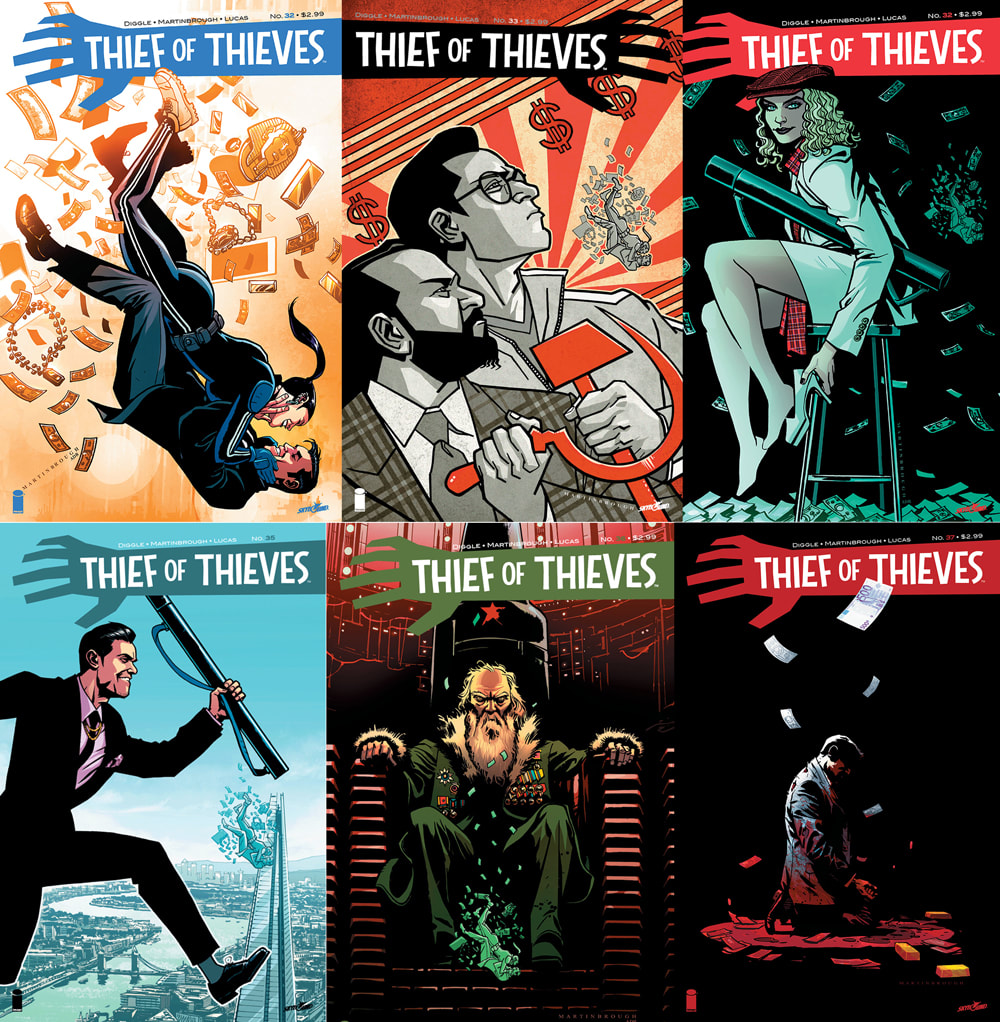










































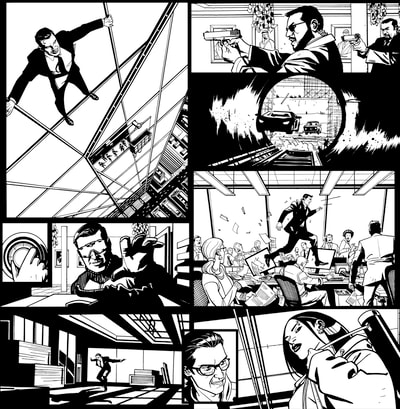

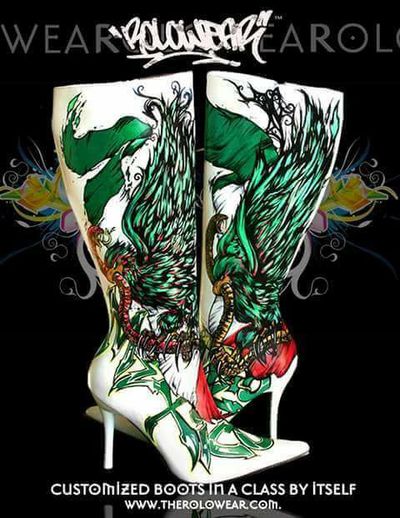





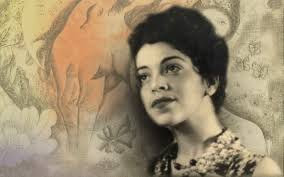




























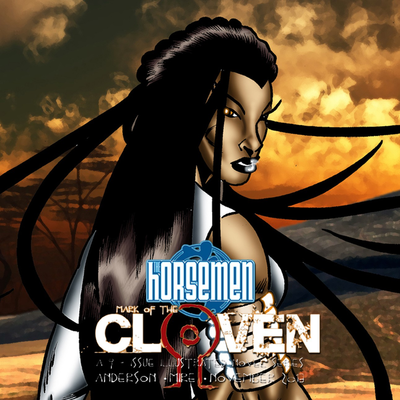



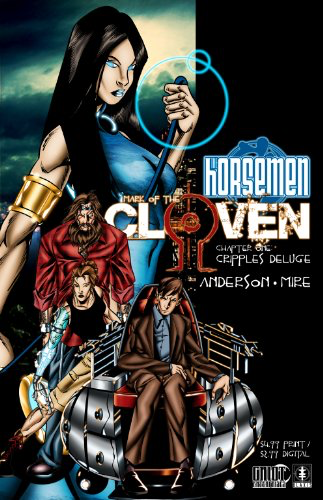






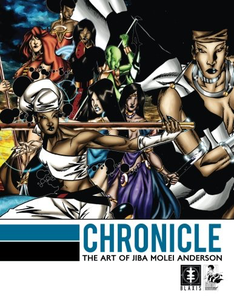


 RSS Feed
RSS Feed
